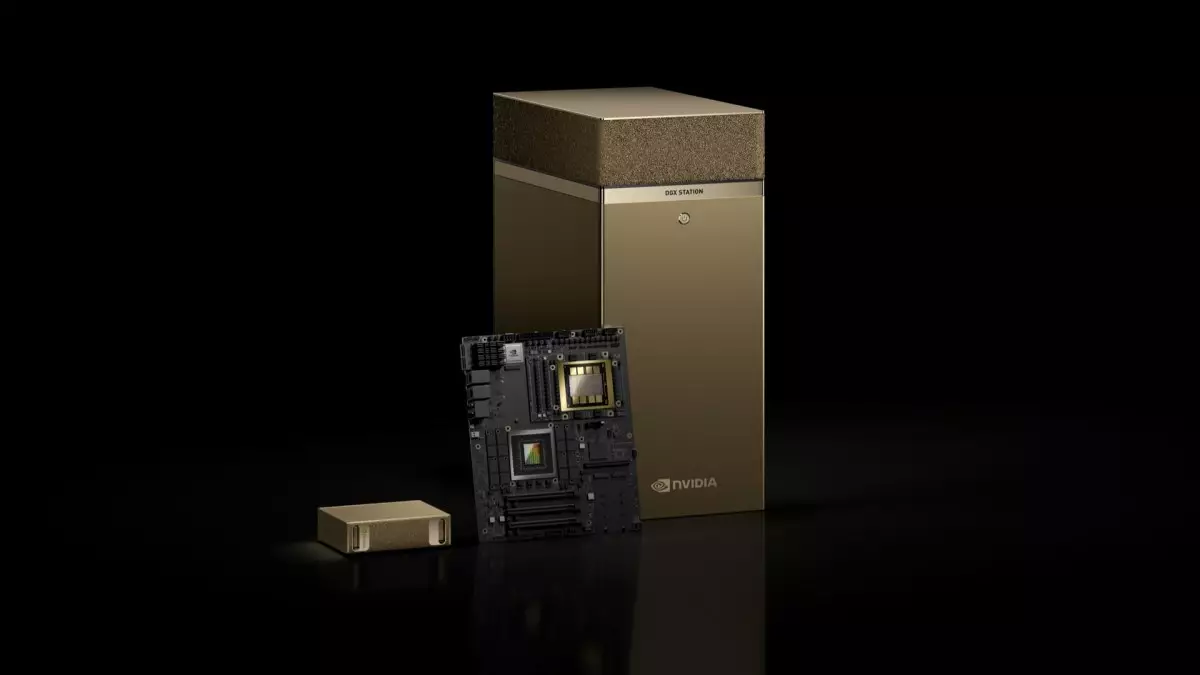Nvidia, a frontrunner in the semiconductor industry, has once again made waves with its ambitious announcement at GTC 2025. During a high-profile keynote, CEO Jensen Huang introduced a groundbreaking series of “AI personal supercomputers” that promise to redefine the landscape of artificial intelligence processing. Powered by the innovative Grace Blackwell chip platform, these machines, named DGX Spark and DGX Station, are poised to deliver unprecedented computing capabilities for AI applications, whether at the edge of technology or within enterprise environments.
The Power Behind Innovation
The heart of this new technology lies in the advanced capabilities of the Grace Blackwell platforms. The DGX Spark, initially referred to as Project Digits, boasts an astounding ability to perform up to 1,000 trillion operations per second. This is a staggering benchmark that illustrates Nvidia’s commitment to pushing the envelope of what’s possible in personal computing. Meanwhile, the DGX Station incorporates the GB300 Grace Blackwell Ultra Desktop Superchip, coupled with a substantial 784GB of memory. This combination not only emphasizes performance but also showcases Nvidia’s dedication to meeting the diverse demands of AI development.
Huang’s proclamation that “this is the computer of the age of AI” is not just hyperbole; it reflects a seismic shift in how we will interact with technology in the coming years. By making these powerful tools accessible to a wide range of users—ranging from small enterprises to large corporations—Nvidia is facilitating an environment where AI agents can proliferate and thrive.
A New Paradigm for Enterprises
As organizations increasingly lean towards AI-driven solutions, the need for robust hardware to support these initiatives has never been more crucial. Huang’s insight that “how we run it will be fundamentally different” highlights the transformative nature of these supercomputers. Unlike traditional systems, these personal supercomputers are designed with scalability and flexibility in mind, allowing users to prototype, fine-tune, and run AI models of various complexities seamlessly.
The availability of the DGX Spark is an exciting development for those eager to start innovating. However, the anticipated release of the DGX Station later this year through major manufacturing partners such as Asus, Boxx, Dell, HP, and Lenovo promises to further democratize access to AI technology. This strategy not only enhances Nvidia’s market reach but also illustrates a commitment to fostering a rich ecosystem for AI development.
What Lies Ahead for AI Computing
Nvidia’s bold vision for the future of personal computing underlines a significant paradigm shift. The assertion that “AI agents will be everywhere” is indicative of a future where machines become intelligent collaborators in various sectors—from healthcare to finance to creative industries. The implications of this technology extend far beyond mere efficiency; they suggest a future where innovation is sped up by the capabilities of powerful, user-friendly supercomputers.
Nvidia’s entry into the realm of AI personal supercomputers represents a pivotal moment in technological advancement. These machines are not only sophisticated tools for AI experimentation and implementation but also herald a new era where computation becomes seamlessly integrated into everyday tasks and enterprise operations. As we stand on the brink of this new frontier, one must wonder how these technologies will continue to shape our lives and industries in ways we are still beginning to imagine.

